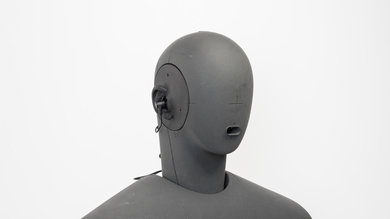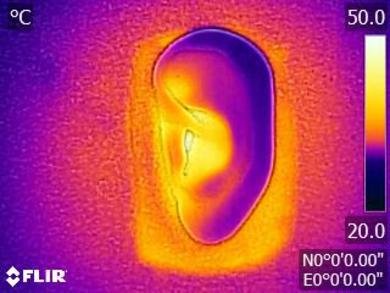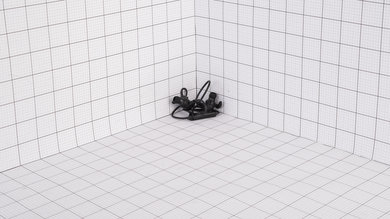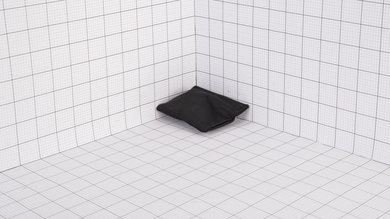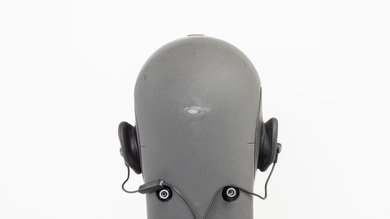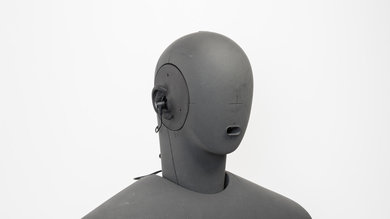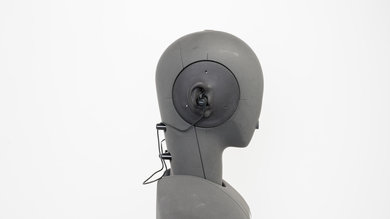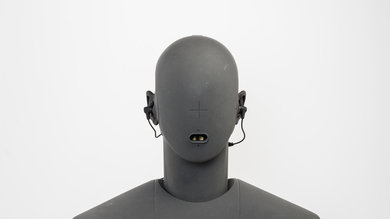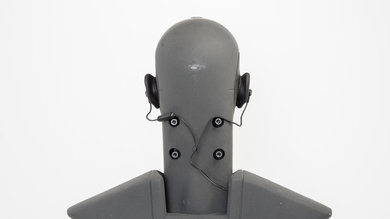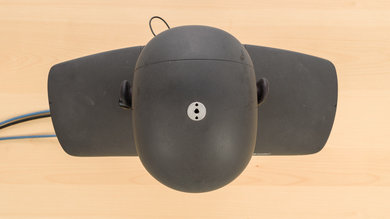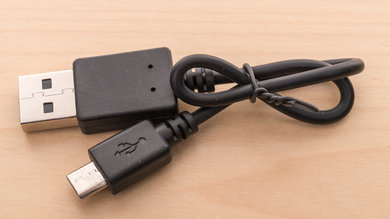The AUKEY Latitude are closed-back in-ear headphones that are decent for a variety of uses. They're great for sports and have a great isolation performance for commuting and the office. These versatile budget headphones have a decent sound performance and should suit most users. Unfortunately, the in-ear fit might not be for everyone, and they aren’t extremely well-built. On the upside, they also have magnetic earbuds, convenient for cable management. They have great wireless range and support a lower-latency codec, which is good for watching video content.
Our Verdict
The AUKEY Latitude are decent for mixed usage. They have a decent audio reproduction and great isolation performance, making them a good choice for commuting and the office. Their wireless design and stability fins make them a good option for sports as well. They might have a slightly short continuous battery life for a whole day of work, but they isolate from ambient chatter well. Unfortunately, they have too much latency for gaming and watching TV unless you have an aptX-LL dongle, which helps to reduce the latency to a usable degree.
- Great noise isolation performance.
- Minimal leakage.
- Excellent wireless range.
- In-ear fit might not be comfortable for everyone.
- Disappointing battery performance.
The AUKEY Latitude are alright for neutral sound. Their passive soundstage doesn't sound as open or spacious as most open-back headphones. On the upside, their sound profile is fairly well-balanced but might sound slightly muddy and cluttered.
The AUKEY Latitude are good for commuting. They have an excellent isolation performance, especially for in-ears without an ANC feature. They passively block a good amount of lower frequencies to reduce engine rumbles and block out ambient chatter. They're very portable, fit in your pockets, and are decently comfortable for short trips like bus rides, although they may not be ideal for long flights.
The AUKEY Latitude are very good for sports. These headphones are very portable, and their wireless design is great for sports as you don’t have to worry about having a cable in the way or getting stuck on something. Also, their multiple stability fins and tip options help you find the most comfortable and stable fit for your physical activity. They're also rated IPX4 for water resistance, although we don't test for it.
The AUKEY Latitude are decent for the office. They isolate a great amount of ambient chatter and are fairly comfortable, but you might need to take breaks here and there. Unfortunately, some may find their 7-hour battery life too short for a whole day of work, especially since you can’t use them when you’re charging them.
The AUKEY Latitude aren't suitable for wireless gaming. While they isolate well to help you focus on your game, they have too much latency to be used for gaming unless you have an aptX-LL dongle. Also, their microphone isn’t the best for online gaming as your voice will sound thin and muffled.
Changelog
- Updated Feb 17, 2020: Converted to Test Bench 1.4.
- Updated Nov 21, 2019: Converted to Test Bench 1.3.1.
- Updated Nov 21, 2019: Converted to Test Bench 1.3.
- Updated Jan 09, 2019: Review published.
Check Price
Popular Headphones Comparisons
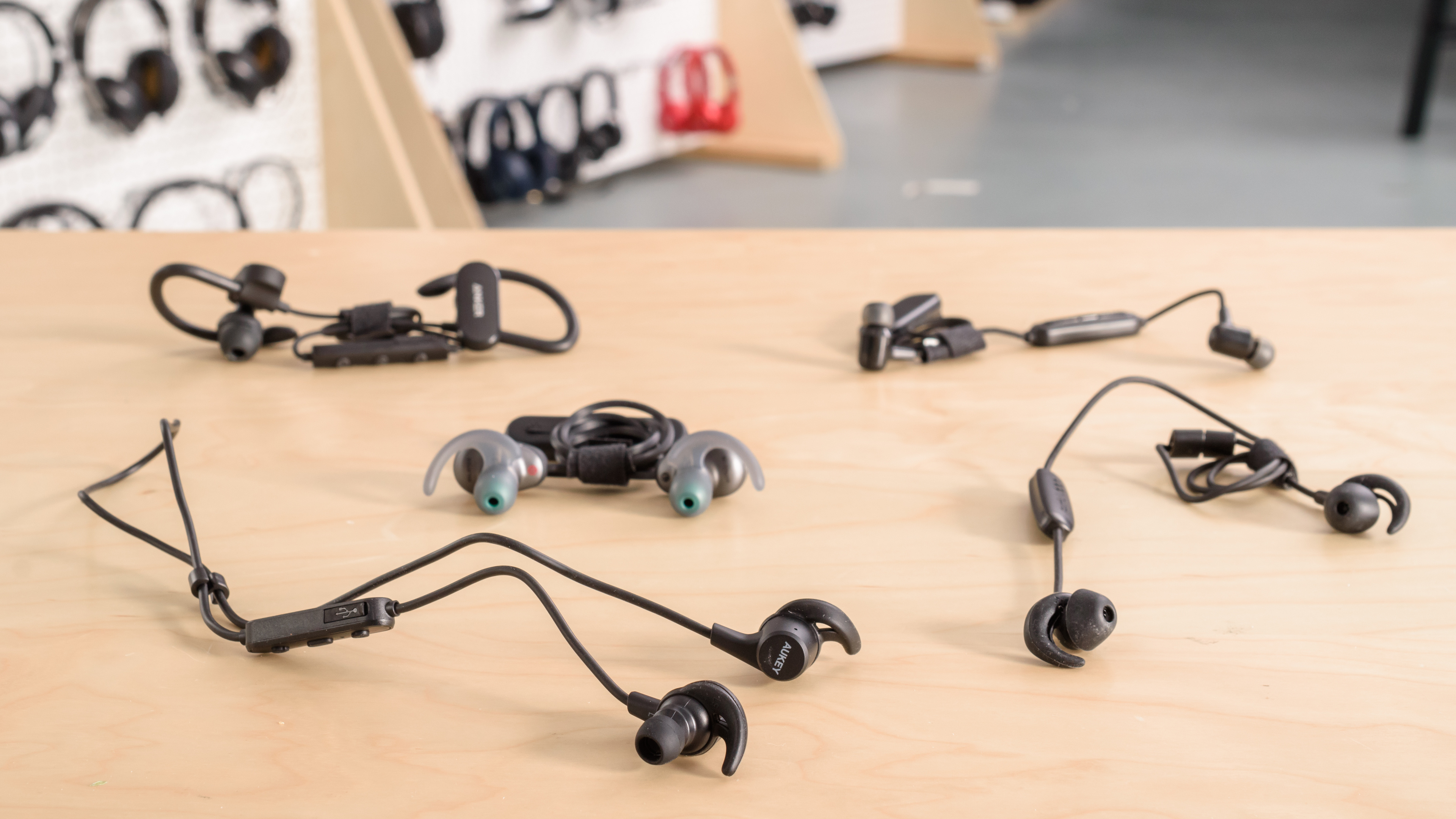
The AUKEY Latitude are wireless closed-back in-ear headphones. They have a decent audio reproduction and are versatile for everyday casual use. They also have great isolation performance, which makes them a good option for commuting. However, they may not be as comfortable for everyone, and even though they support aptX-LL, their latency is still a bit too high for gaming on your phone.
See our recommendations for the best earbuds under $50, the best Bluetooth earbuds under $100, and the best budget wireless headphones.
The AUKEY Latitude and the Jaybird Freedom F5 Wireless 2016 are very similar headphones. The AUKEY have slightly better isolation performance, better battery life, and better wireless range. However, the Jaybird are compatible with the MySound app that lets you EQ the sound of the headphones to your preference. If you're looking for sports headphones and don't need long battery life, the Jaybirds might be a better choice for their customization options, but they are more expensive.
The AUKEY Latitude are better mixed-usage headphones than the Anker SoundBuds Curve 2017. The AUKEY have great isolation performance, are a good option for commuting, have an excellent wireless range, and can connect to two devices simultaneously. On the other hand, the Anker are noticeably more comfortable and are more stable for sports due to their ear-hook design. Athletes might prefer the Anker, as they also have overemphasized bass.
The AUKEY Latitude are slightly better mixed-usage headphones than the sports-oriented JBL Endurance Sprint Wireless. The AUKEY have better latency and isolate more noise, which can be useful in commutes. On the other hand, the JBL have a sportier look, and some might prefer the ear-hook design. The JBL also have a touch-sensitive control scheme, which is a nice addition at this price range, but it is fairly difficult to get used to. They do have better default quality but don't have any EQ preset modes like the AUKEY.
The AUKEY Latitude are better headphones than the Sony WI-SP600N Wireless. The AUKEY have better sound quality, wireless range, and can connect to two devices. Even if they don't have an ANC feature like the Sony, the AUKEY still have better isolation performance. On the other hand, the AUKEY don’t have a compatible app with an EQ like the Sony, which have slightly better build quality but are more expensive.
Test Results
The AUKEY Latitude headphones are fairly low-profile in-ears. They have a sporty look due to their stability fins but don't stand out too much. They also have slightly angled earbuds with magnetic backs for easier cable management once around your neck. They come in an all-black design, but there’s also a variant with blue fins, cable, and buttons.
The AUKEY Latitude headphones may not be comfortable for everyone as they enter your ear canal deeply. Thankfully, they come with a few ear tip size options to help you find the most comfortable fit. However, you could feel fatigued while wearing them for long periods. If you’re looking for more comfortable headphones with a similar design, try the Anker SoundBuds Curve Upgraded 2019 or the JBL Reflect Mini 2 instead.
The AUKEY Latitude's in-line remote is okay. You have music/call management, volume control, and track skipping forward and backward. The remote itself feels cheaper when compared to similar headphones like the Jaybird X3, but the buttons are still clicky and easy to use. You can also switch between EQ presets with a double press of the multifunction button. However, no feedback lets you know which mode you're on, other than the sound difference, which is disappointing and confusing.
The AUKEY Latitude are very portable like most in-ears. Thanks to their design, they can easily fit in pockets or a bag. They also come with a small pouch that doesn’t add too much bulk and stay easy to carry on you at all times. They also have magnetic earbuds for easier cable management when resting around your neck.
The AUKEY Latitude are decently-built headphones. They have dense earbuds that feel solid enough to survive a few drops. They're also magnetic, making cable management easier. The cables are a bit thinner than other more high-end headphones like the Jaybird X4, and the plastic feels a bit cheaper. On the upside, they have an IPX4 rating for water resistance, although we don't test for it, and other headphones like the JBL Endurance Sprint have higher ratings.
The AUKEY Latitude are stable headphones that you can run or exercise with. Their stability fins mixed with the in-ear fit makes them stable for most sports activities, and they shouldn’t pop out of your ears. Their wireless design also helps by not having a wire in the way that could get hooked on something, yanking the headphones off.
The AUKEY Latitude have fantastic frequency response consistency. Assuming the user can achieve a proper fit and an air-tight seal using the assortment of tips that come with them, they should get consistent bass and treble delivery every time they use the headphones.
The AUKEY Latitude have decent bass accuracy. LFE (low-frequency extension) is at 10Hz, which is excellent. Low-bass and mid-bass are also very good, flat, and even. This means they can produce a decent amount of low-end thump and rumble, important for bass-heavy music and sound effects, as well as the punch and body of bass guitars and kick instruments. However, high-bass, responsible for warmth, is overemphasized, making the overall bass a bit boomy and muddy.
The AUKEY Latitude have great mid-accuracy. The whole range is fairly even and well-balanced, making the reproduction of vocals and instruments accurate. However, there’s a tilt favoring lower frequencies, making them sound a bit cluttered and thick.
The AUKEY Latitude have impressive treble accuracy. The range is even, but low-treble is slightly lacking, making vocals and lead instruments lack in detail and presence, while the 10kHz peak will make sibilants (S and T sounds) feel sharp and piercing. It'll be most noticeable on vocals and cymbals but may not be perceived as intense across different users.
The AUKEY Latitude have an excellent imaging performance. The weighted group delay is at 0.07, which is excellent. The GD graph shows the entire group delay response is below the audibility threshold, suggesting a tight bass reproduction and a transparent treble. Also, the L/R drivers of our test unit were well-matched in amplitude, frequency, and phase response, important for the accurate placement and localization of objects (voices, instruments, video game effects) in the stereo image. However, these results are only valid for our test unit, and yours may perform differently.
The AUKEY Latitude have a bad passive soundstage. Since creating a large and speaker-like soundstage is partially dependent on having a speaker-like pinna activation. In-ear headphones bypass the pinna (the outer ear) and don't interact with it, their soundstage will be perceived to be small and located inside the listener's head. Their closed-back design also means that their soundstage won't feel and open as most open-back earbuds like the Apple AirPods (1st generation) Truly Wireless and the Bose SoundSport Free Truly Wireless.
The AUKEY Latitude have an excellent noise isolation performance. In the bass range, where the rumble of engines sits, they isolate about 15dB, which is good. In the mid-range, important for blocking out speech, they isolate about 29dB, which is great. In the treble range, occupied by sharp S and T sounds, they isolate more than 44dB of noise, which is excellent.
The AUKEY Latitude have an excellent leakage performance. These in-ears practically don't leak, so you don't need to worry about disturbing people around you unless you're blasting your music in a very quiet room. With the music at 100dB SPL, the leakage at 1 foot away averages 25dB SPL and peaks at 42dB SPL, which is significantly quieter than the noise floor of an average office.
The in-line mic has an okay recording quality. The LFE of 285Hz results in a recorded or transmitted speech that is relatively thin. The HFE of 3.3kHz suggests speech that lacks detail and presence. However, the intelligibility of speech on this microphone will be decent in quiet environments.
The AUKEY Latitude's in-line microphone is mediocre at noise handling. In our SpNR test, they achieved a speech-to-noise ratio of about 16.5dB, indicating they're best suited for quiet and moderate environments. However, they'll struggle to separate speech from ambient noise in loud situations.
These headphones have a decent continuous battery life of slightly over 7 hours, which should be enough for most casual listeners. Some may find it a bit short for a whole workday, especially since you can’t use them while charging and they don’t have any power-saving feature to extend battery life. However, they only take 1.5 hours to charge, which is good.
The AUKEY Latitude don't have a companion app for additional customization options.
These Bluetooth headphones can connect to two devices simultaneously, which is convenient if you often switch between two different audio sources like a computer and a phone. Unfortunately, they don’t support NFC, but their pairing procedure is fairly simple and easy to do.
They don't have too much latency over Bluetooth with iOS or Android devices. It's higher when you connect to a PC, but you can get lower latency with an aptX-compatible dongle. They aren’t advertised as aptX-LL compatible, but they have even lower latency with that codec.
These headphones don't have any wired connectivity. If you want a wired in-ear option, try the 1More Piston Classic.
They don't have a dock. If you want versatile headphones with a dock, try the SteelSeries Arctis 7. However, they aren't as compact or easy to carry around as the AUKEY Latitude.

